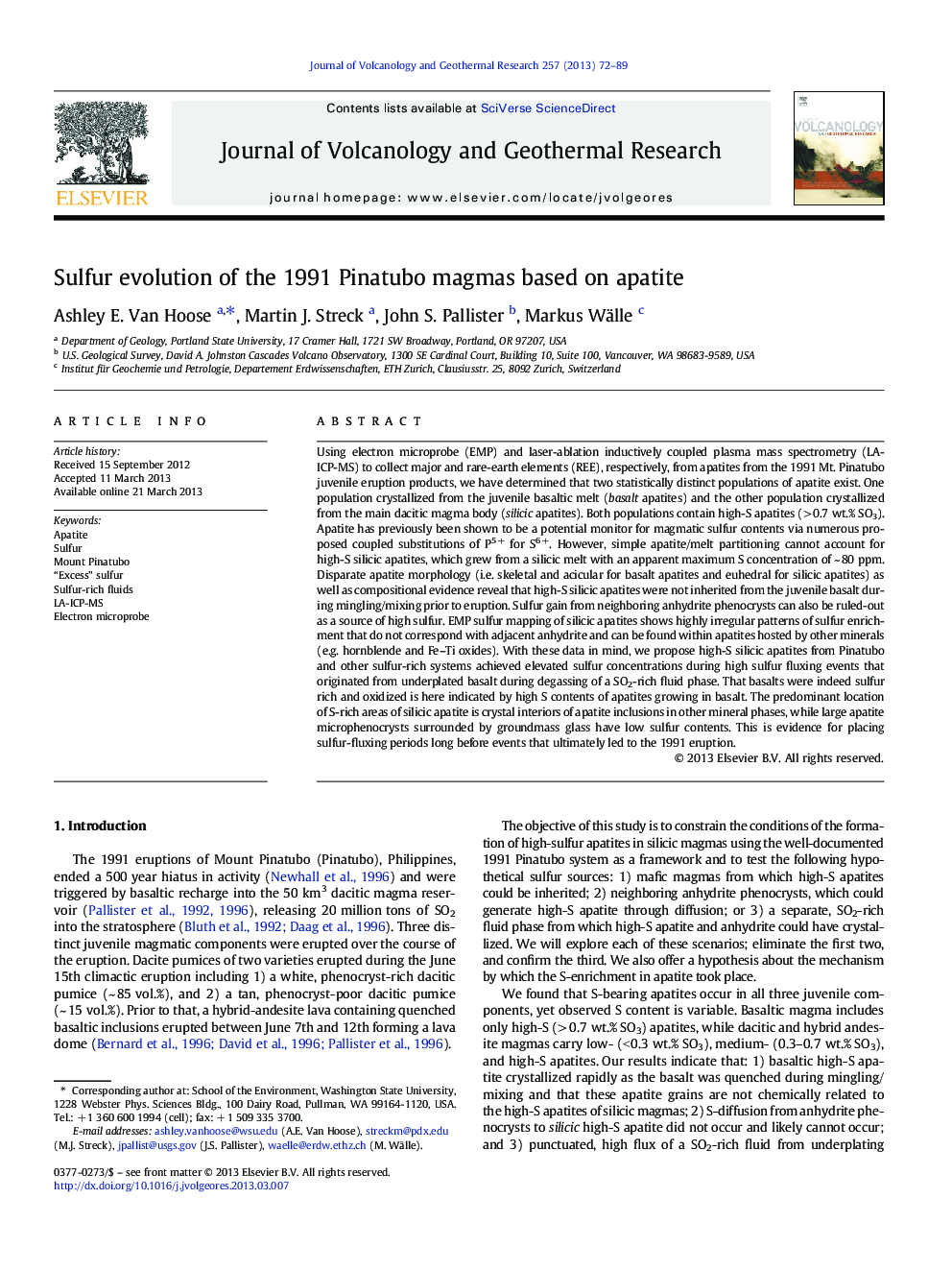| کد مقاله | کد نشریه | سال انتشار | مقاله انگلیسی | نسخه تمام متن |
|---|---|---|---|---|
| 4714827 | 1638364 | 2013 | 18 صفحه PDF | دانلود رایگان |
• Two statistically valid populations of apatite occur in the 1991 Pinatubo magmas.
• Apatites from both populations have high sulfur concentrations, > 0.7 wt.% SO3.
• High-S apatites in silicic Pinatubo magmas were not inherited from basaltic magma.
• Sulfur diffusion from anhydrite did not occur to generate high-S apatites.
• SO2-rich fluid from underplating basalt generates high-S apatite in silicic melts.
Using electron microprobe (EMP) and laser-ablation inductively coupled plasma mass spectrometry (LA-ICP-MS) to collect major and rare-earth elements (REE), respectively, from apatites from the 1991 Mt. Pinatubo juvenile eruption products, we have determined that two statistically distinct populations of apatite exist. One population crystallized from the juvenile basaltic melt (basalt apatites) and the other population crystallized from the main dacitic magma body (silicic apatites). Both populations contain high-S apatites (> 0.7 wt.% SO3). Apatite has previously been shown to be a potential monitor for magmatic sulfur contents via numerous proposed coupled substitutions of P5 + for S6 +. However, simple apatite/melt partitioning cannot account for high-S silicic apatites, which grew from a silicic melt with an apparent maximum S concentration of ~ 80 ppm. Disparate apatite morphology (i.e. skeletal and acicular for basalt apatites and euhedral for silicic apatites) as well as compositional evidence reveal that high-S silicic apatites were not inherited from the juvenile basalt during mingling/mixing prior to eruption. Sulfur gain from neighboring anhydrite phenocrysts can also be ruled-out as a source of high sulfur. EMP sulfur mapping of silicic apatites shows highly irregular patterns of sulfur enrichment that do not correspond with adjacent anhydrite and can be found within apatites hosted by other minerals (e.g. hornblende and Fe–Ti oxides). With these data in mind, we propose high-S silicic apatites from Pinatubo and other sulfur-rich systems achieved elevated sulfur concentrations during high sulfur fluxing events that originated from underplated basalt during degassing of a SO2-rich fluid phase. That basalts were indeed sulfur rich and oxidized is here indicated by high S contents of apatites growing in basalt. The predominant location of S-rich areas of silicic apatite is crystal interiors of apatite inclusions in other mineral phases, while large apatite microphenocrysts surrounded by groundmass glass have low sulfur contents. This is evidence for placing sulfur-fluxing periods long before events that ultimately led to the 1991 eruption.
Journal: Journal of Volcanology and Geothermal Research - Volume 257, 1 May 2013, Pages 72–89
